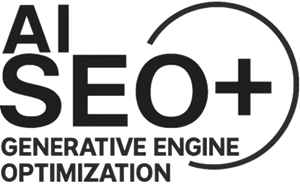A Beginner’s Guide to Google Ranking, How to Appear on Page 1

Everyone wants their website to rank on the first page of Google, but achieving this goal requires the right SEO strategy and consistent effort. For beginners, the process may seem overwhelming, but understanding how Google works and applying proven techniques can make a huge difference.
In this beginner-friendly guide, we’ll break down the essential steps you need to take to improve your website’s ranking and secure a spot on Google’s coveted page 1 in 2025.
1. Understand How Google Ranking Works
Google uses complex algorithms to decide which web pages to display for a particular search query. These algorithms consider factors like relevance, authority, and user experience.
Key Factors That Influence Rankings:
- Content Quality: Does your content answer the user’s query effectively?
- Backlinks: Do other reputable websites link to yours?
- User Experience: Is your site mobile-friendly and fast-loading?
- Technical SEO: Can Google easily crawl and index your pages?
Understanding these factors is the first step in planning your SEO strategy.
2. Perform Keyword Research
To appear on Google’s first page, you need to target the right keywords that your audience is searching for.
Steps to Find Keywords:
- Use tools like Google Keyword Planner, Uber suggest, or Ahrefs to identify relevant keywords.
- Focus on long-tail keywords (e.g., “how to rank a new website on Google 2025”) as they are less competitive.
- Analyze your competitors to find keyword gaps and opportunities.
Include these keywords naturally in your content, titles, meta descriptions, and headings.
3. Create High-Quality, Optimized Content
Content is still the king when it comes to SEO. Your goal should be to create valuable and engaging content that solves your visitors’ problems.
Content Tips for Beginners:
- Write in-depth blog posts that answer common user questions.
- Use images, videos, and infographics to make your content more engaging.
- Structure your content with clear headings (H2, H3) for better readability.
- Update your content regularly to keep it fresh and relevant.
Example: Instead of a generic post like “SEO Tips,” write a detailed guide like “10 Proven SEO Tips for New Websites in 2025.”
4. Optimize On-Page SEO
On-page SEO involves optimizing individual pages to rank higher and earn more traffic from search engines.
Key On-Page SEO Elements:
- Title Tag: Include your main keyword and make it compelling.
- Meta Description: Write a clear summary to improve click-through rates (CTR).
- URL Structure: Use short and descriptive URLs (e.g., www.yoursite.com/google-ranking-guide).
- Internal Linking: Link related blog posts within your website.
- Image Alt Text: Add descriptive alt tags to images for accessibility and SEO.
5. Build High-Quality Backlinks
Backlinks from authoritative websites signal to Google that your content is trustworthy and valuable.
Beginner-Friendly Link-Building Tips:
- Guest post on related blogs in your niche.
- Submit your site to high-quality directories and business listings.
- Reach out to websites for collaboration opportunities.
- Create shareable content like infographics to attract natural links.
Pro Tip: Focus on quality over quantity. A few high-authority backlinks are more valuable than hundreds of low-quality ones.
6. Improve Technical SEO
Technical SEO ensures that search engines can crawl and index your website efficiently.
Checklist for Beginners:
- Make sure your website is mobile-friendly and loads quickly.
- Fix broken links and redirect any deleted pages properly.
- Create an XML sitemap and submit it to Google Search Console.
- Use HTTPS to secure your website with an SSL certificate.
Tools like Google Search Console and Screaming Frog can help you identify technical issues.
7. Focus on User Experience (UX)
Google increasingly rewards websites that provide a great user experience. Sites that are easy to navigate and load quickly tend to rank higher.
Tips to Enhance UX:
- Ensure fast loading times by optimizing images and using caching.
- Use clear navigation menus and avoid clutter.
- Add internal links to guide users to related content.
- Make your website accessible for all users, including those with disabilities.
A positive user experience keeps visitors engaged and reduces bounce rates—both of which help your rankings.
Final Thoughts
Ranking on the first page of Google doesn’t happen overnight, especially for beginners. However, by applying these SEO best practices consistently, you can dramatically improve your chances of success.
Start with keyword research, focus on quality content, and ensure your website is technically sound. Over time, Google will recognize your efforts and reward you with higher visibility.
If you’re serious about growing your online presence, consider partnering with SEO experts. At SEO PLUS GEO, we specialize in helping new websites achieve top rankings and drive organic traffic effectively.
